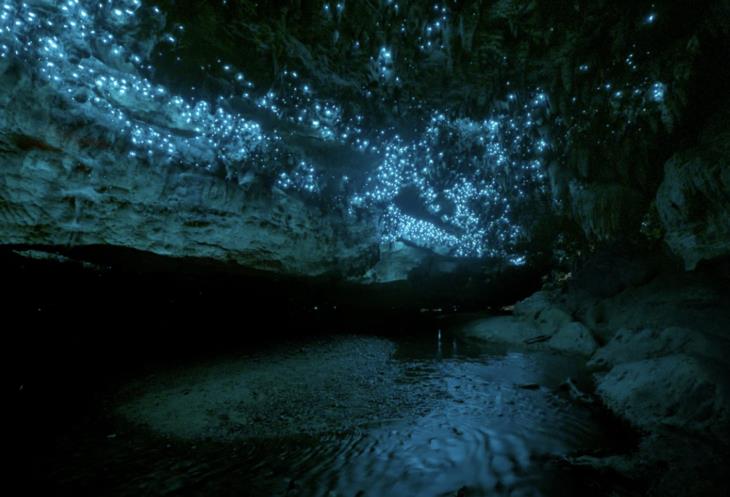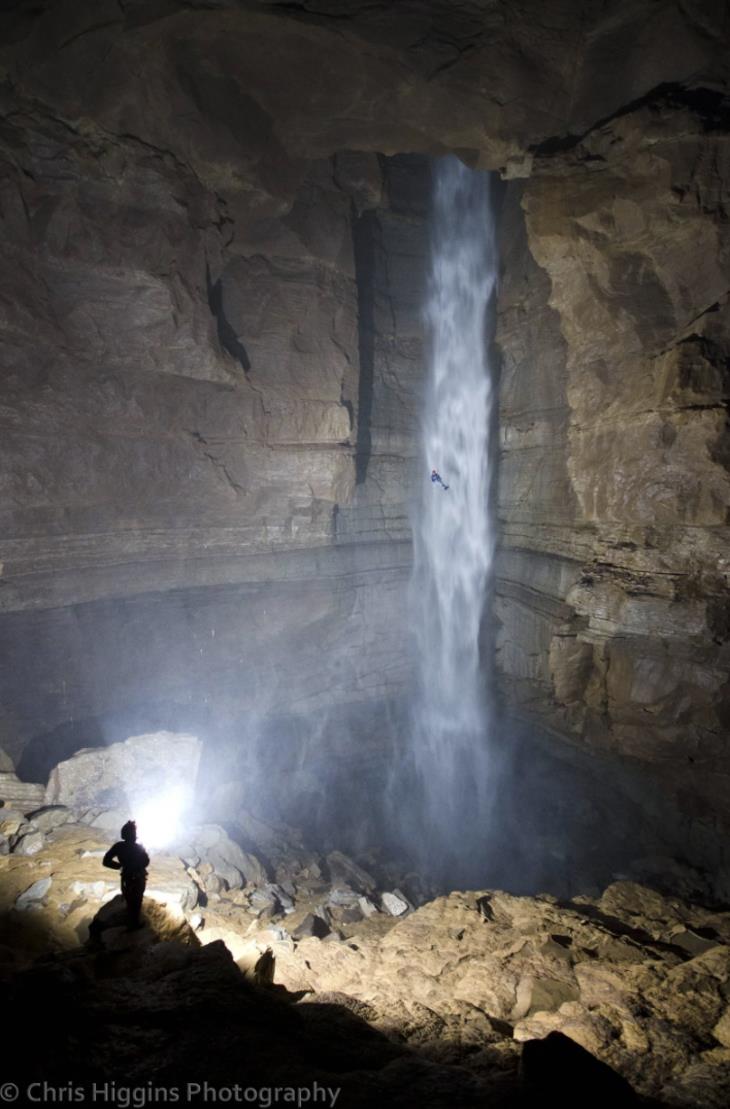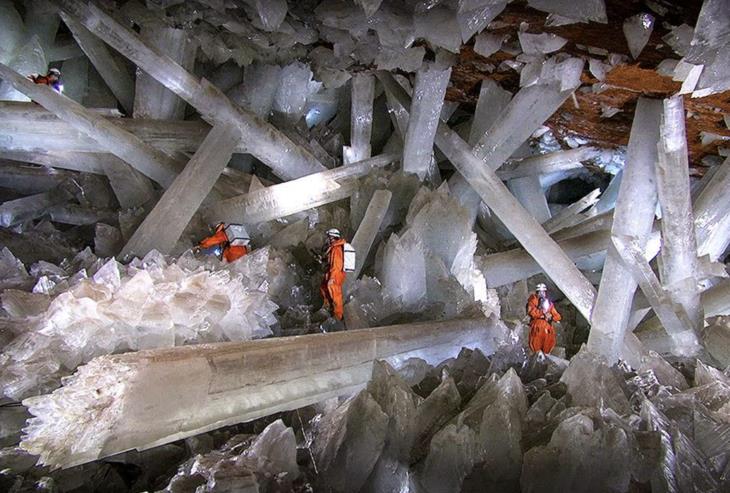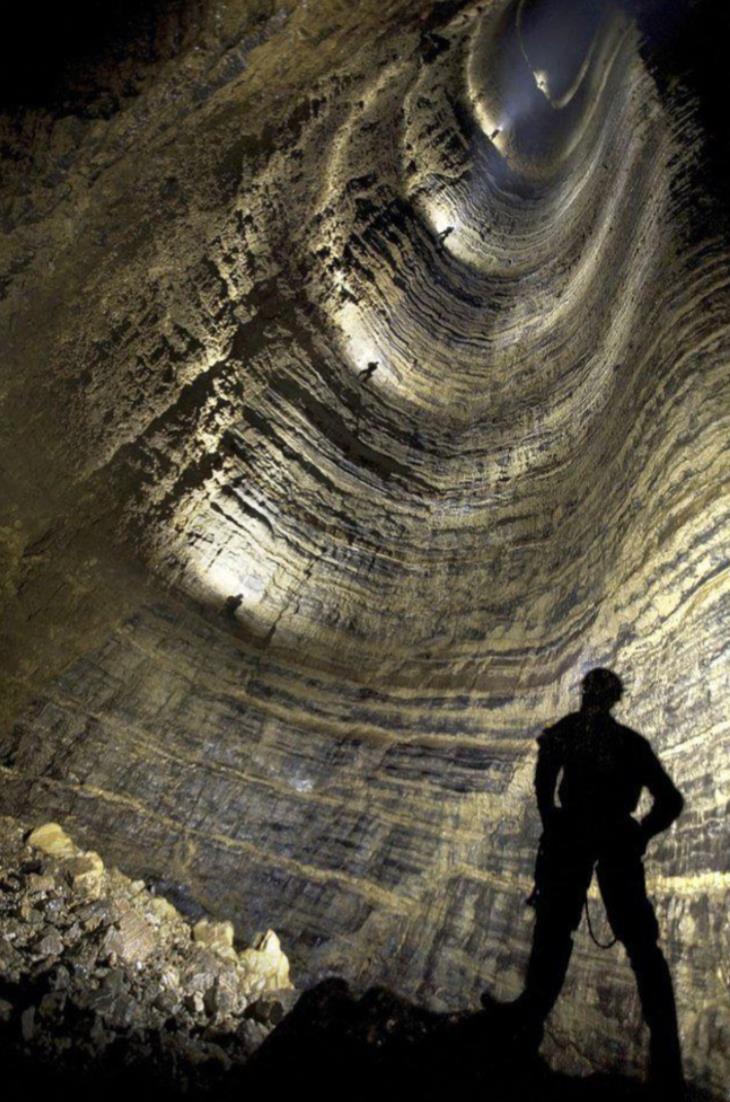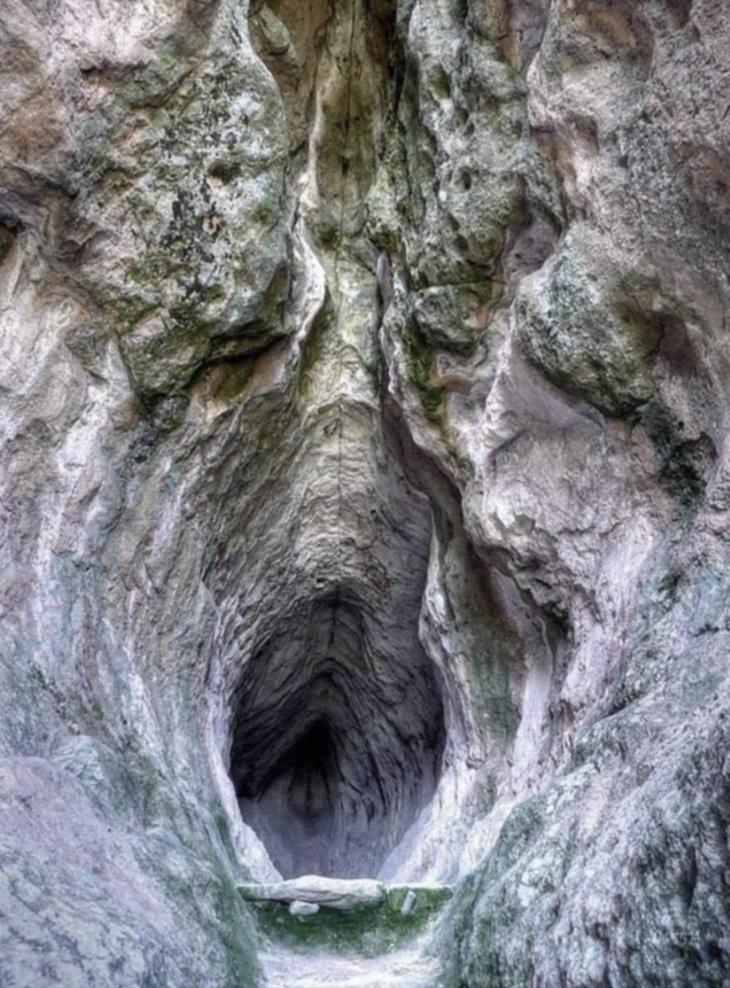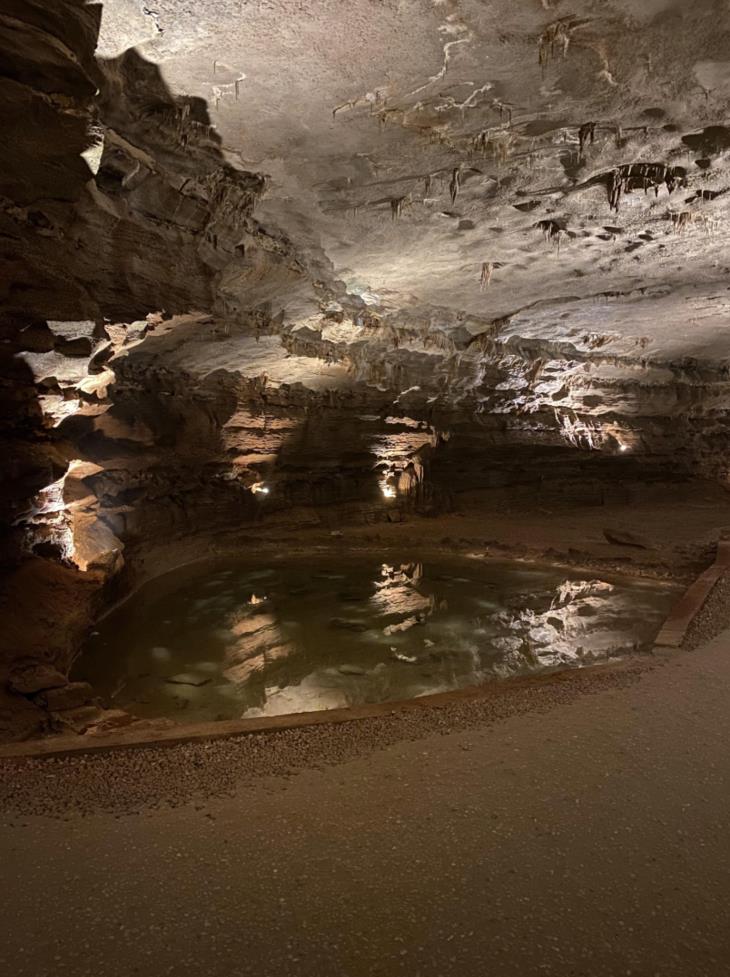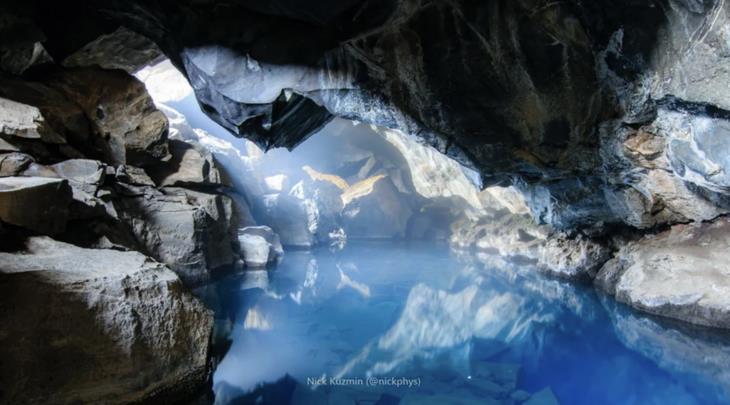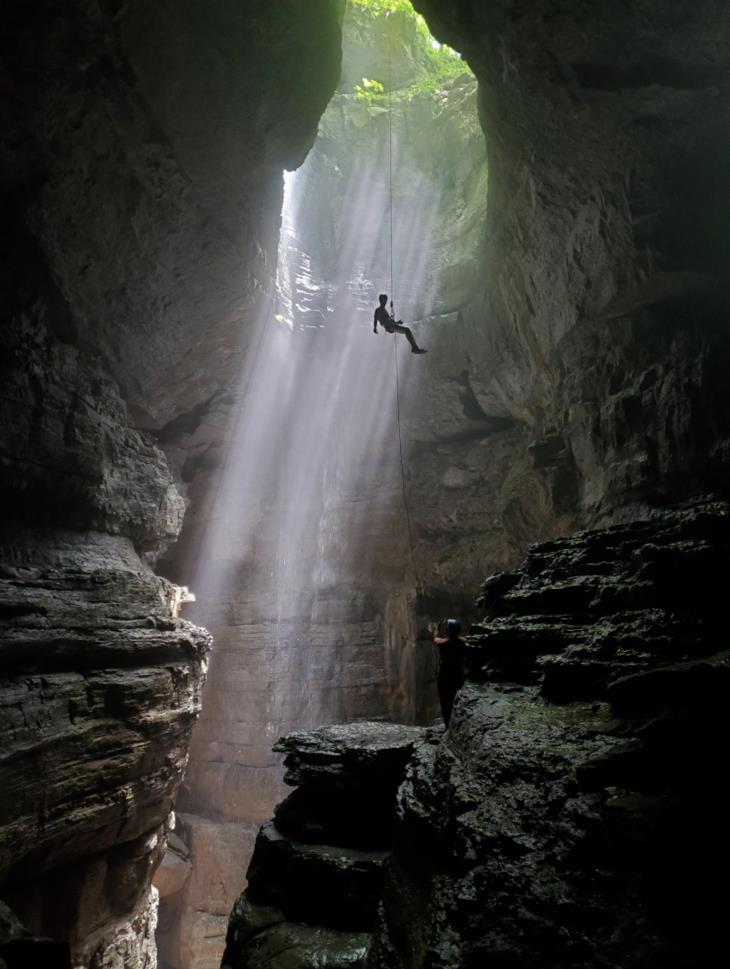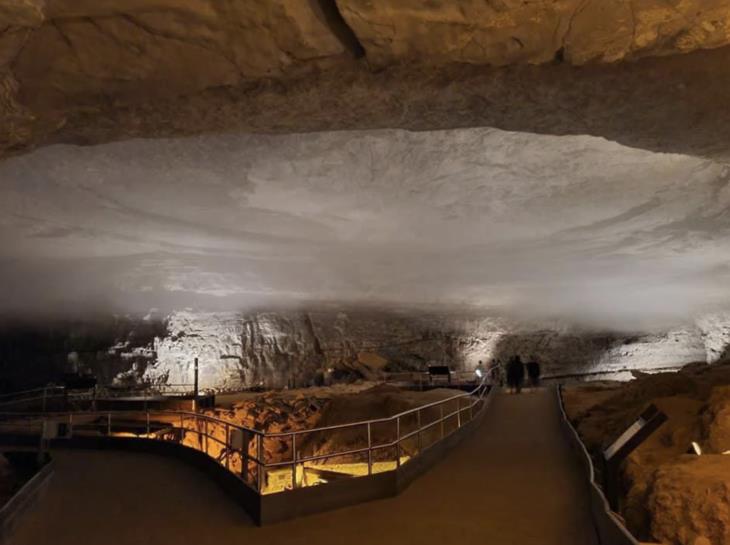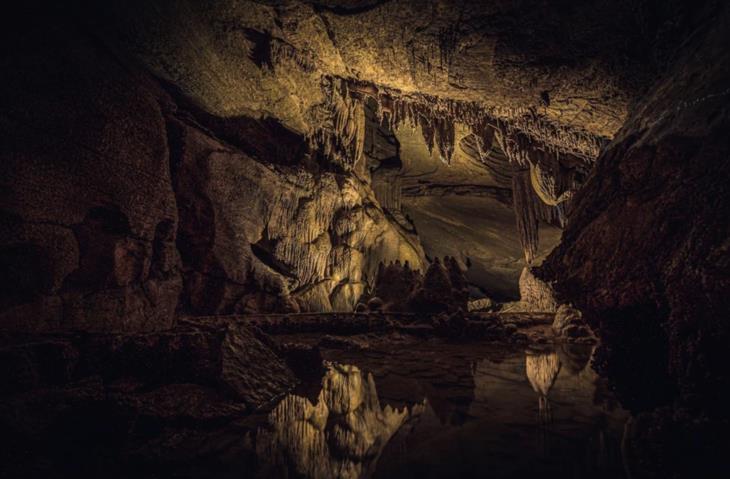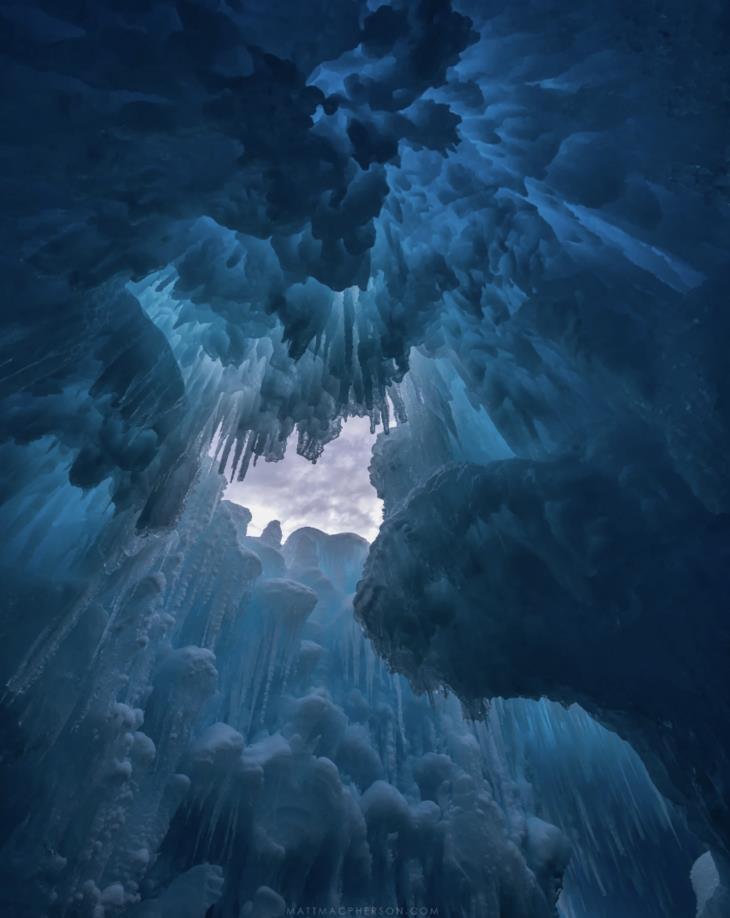Tucked in the heart of New Zealand, the Waitomo Glowworm Caves are lit by thousands of glowworms, creating a magical starry-sky effect underground. The cave is home to the species Arachnocampa luminosa, unique to New Zealand. The worms emit a soft blue-green light to attract prey.
Visitors can glide through the cave on a boat, experiencing the surreal beauty created by these tiny bioluminescent creatures, making it one of the country’s most mesmerizing natural wonders.
2. Ruby Falls, Tennessee
Ruby Falls is a breathtaking 75-meter (247-foot) waterfall located inside Lookout Mountain, Tennessee. Discovered in 1928, the underground cascade is illuminated with colorful lights, creating a dramatic display as it plunges down into the cavern. The waterfall is part of an extensive cave system that stretches over 341.3 meters (1,120 feet) underground.
Ruby Falls is the tallest and deepest underground waterfall open to the public in the U.S., drawing visitors to witness this natural wonder inside the heart of the mountain.
3. Cave of Giant Crystals, Naica, Mexico
The Cave of Giant Crystals in Naica, Chihuahua, Mexico, is a geological marvel located 300 meters (980 feet) underground. This cave features some of the largest natural crystals ever discovered, with some reaching lengths of up to 11 meters (36 feet) and weighing over 50 tons!
Formed over hundreds of thousands of years, these massive selenite crystals were created by mineral-rich waters heated by magma below the cave. Due to the extreme temperatures, reaching up to 136°F, the cave is not easily accessible to the public.
4. Krubera Cave, Georgia
Krubera Cave, located in the Western Caucasus mountains of Georgia, holds the record as the deepest cave in the world, plunging to a staggering depth of 2,199 meters (7,208 feet). Known as the “Everest of the cave world,” it was first explored in 2001, with expeditions continuing to push its boundaries. The cave’s extensive system of tunnels and chambers has made it a favorite among elite cavers, but its sheer depth and complexity make it one of the most challenging caves to explore.
5. Utroba Cave, Bulgaria
Utroba Cave, located in the Rhodope Mountains of Bulgaria, is a remarkable site carved by hand over 3,000 years ago. Shaped like a womb, it is believed to have been a sanctuary dedicated to ancient fertility rituals. The cave’s entrance is around 22 feet (6.7 meters) high, and during specific times of the year, sunlight enters the cave in a way that symbolically represents fertility. This unique blend of history, mythology, and nature makes Utroba Cave a fascinating destination for both historians and adventurers.
6. Fantastic Caverns, Missouri
Fantastic Caverns, located in Springfield, Missouri, is one of the few caves in the world that visitors can explore by jeep-drawn tram. Discovered in 1862, it’s known for its massive chambers and beautiful formations, including stalactites and stalagmites. Stretching over a mile underground, Fantastic Caverns offers a unique “ride-through” experience that allows visitors to see the cave’s wonders without walking, making it accessible for all ages and abilities. It’s a must-visit for those exploring the natural beauty of Missouri.
7. Grjótagjá Lava Cave, Iceland
Grjótagjá is a lava cave in Northern Iceland, famous for its hot springs and connection to Icelandic folklore. Inside the cave, a geothermal spring heats the water to temperatures around 104°F, making it a popular spot for bathing. With its otherworldly atmosphere, as well as its contrast of warm water and cold, rocky walls, the cave is a popular tourist destination and even a filming location, most famously for its appearance in Game of Thrones. The cave is small but filled with fascinating history and natural beauty.
8. Cloud Ladder Hall, Quankou Dong, China
The Cloud Ladder Hall in Chongqing, China, is a huge natural chamber with its own weather system. A single beam of light from a headlamp barely pierces the mist as adventurers dangle on ropes, dwarfed by the sheer size of the cave. The room is enveloped in fog and mist, and the high humidity creates clouds within the cave. The scale of this cave is both awe-inspiring and humbling for all who enter.
9. Ice Cave, British Columbia
British Columbia's Coast Mountains have some stunning ice caves - natural formations created by melting glaciers. These ice caves are constantly changing, with walls and ceilings shimmering in shades of blue and white. The caves’ breathtaking beauty comes from the way sunlight filters through the ice, casting an ethereal glow on the interior. As mesmerizing as they are, these caves are fragile and can collapse unexpectedly, making them a fleeting but unforgettable sight.
10. Cave in Chattanooga, Tennessee
Tucked away in the mountains of Chattanooga, Tennessee, are several caves that offer incredible underground experiences. One of the most famous is Raccoon Mountain Caverns, with over 5.5 miles (8.85 km) of mapped passages. Known for its spectacular formations, including rare shield formations, it’s a must-see for spelunkers and curious visitors alike. Guided tours take you through narrow passages and massive rooms, offering a glimpse into Tennessee’s underground beauty.
11. Snow Cave, Desolation Wilderness
This snow cave, formed naturally in the Desolation Wilderness, shows the beauty of winter landscapes. As the sunlight filters through the snow, its golden hues illuminate the cave's "roof," creating an almost magical atmosphere. These snow caves are temporary and form when snow accumulates in massive drifts, often lasting only through the winter months. The breathtaking colors and peaceful surroundings make this cave a hidden gem for those who venture into the wilderness.
12. Mammoth Cave, Kentucky
Mammoth Cave in Kentucky holds the title of the world’s longest cave system, with over 420 miles (676 km) of explored passages. A UNESCO World Heritage Site, it’s known for its vast chambers, complex underground labyrinths, and fascinating geology. The cave also has a rich history, from Native American explorers to early saltpeter mining during the War of 1812. Today, it’s a popular destination for tourists and cavers alike, offering everything from easy walking tours to more adventurous spelunking experiences.
13. A cave in Virginia
Virginia is home to several awe-inspiring caves, including the famous Luray Caverns. Discovered in 1878, these caverns are known for their towering stalactites and stalagmites, as well as their natural cathedral-sized chambers. Luray is also home to the world’s largest musical instrument, the Great Stalacpipe Organ, which creates music by tapping on the cave’s formations. Visitors can take guided tours to explore the caves’ natural beauty, making it a must-visit destination in Virginia.
14. Ice Cave, New Hampshire
Similar to British Columbia, New Hampshire's mountainous regions harbor ice caves, though their locations are often kept undisclosed to preserve their delicate ecosystems. These ice caves are typically formed in areas with consistent cold temperatures and snow accumulation, creating beautiful but potentially hazardous environments for exploration. Exploring these caves requires caution, but the experience is well worth the adventure.

